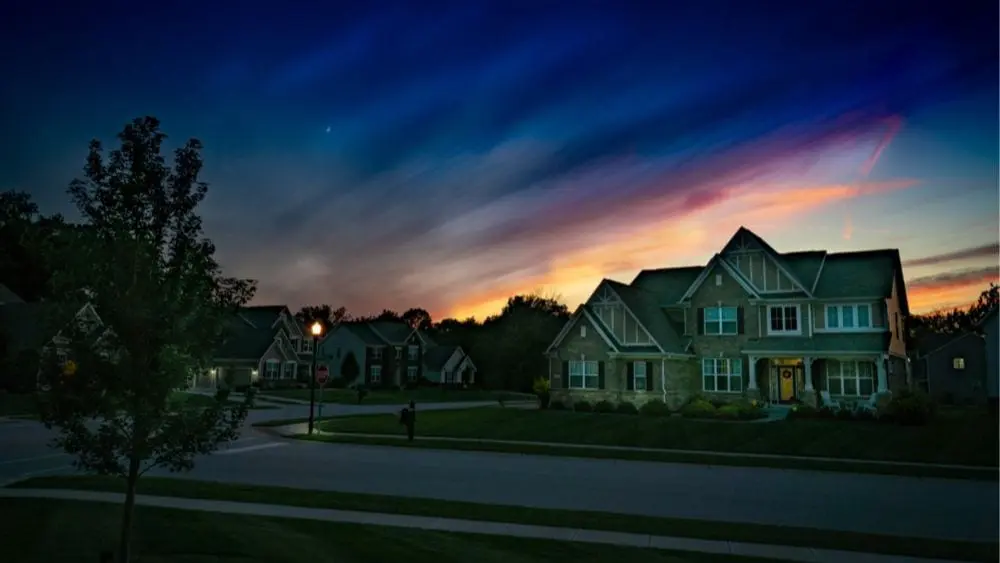They’re sometimes thought of as being “cookie cutter,” restrictive or being located out in the boonies, but master planned communities (MPCs) are anything but. Sure, there was a time when these communities looked like something out of ABC’s Suburgatory, but nowadays they often have anti-monotony codes to prevent repetition and developers are more aware than ever that they need to provide a community that is relevant to today’s consumers.
Here are some MPC myths debunked:
Safety and Security
Myth: Master planned communities are no safer than any other type of neighborhood.
Truth: MPCs not only provide superior safety features, but also provide a unique feeling of security. Many of these neighborhoods are either gated, patrolled by neighborhood security or both. Also, they are farther removed from commercial and industrial areas.
“Gated communities cut down on through-traffic within the community, making the streets less busy than open neighborhoods,” says Ahna Gavrelos, a member of Grand View Builders based in Houston, Texas.
Amenities
Myth: Master planned communities offer nothing other than parks and country clubs.
Truth: MPCs used to offer country club-style amenities and not much else, but “eventually homeowners didn’t just want to be a part of a country club,” said Phyllis DeWitt, of DeWitte Marketing, in a recent interview with NewHomeSource. But, DeWitt says MPCs are now designed with the homeowner in mind. Developers know what kind of amenities are desirable in a neighborhood and they provide them.
Beyond parks and country club memberships, MPCs offer amenities such as pools, golf courses, interest clubs, community events, gym memberships, water parks, hike and bike trails and much more. Each community offers different amenities, but regardless of which MPC you choose, there will be a variety to choose from.
Customized Options
Myth: Living in a master-planned community means living in a “cookie-cutter” house that looks exactly like all the others in the neighborhood.
Truth: Homes in MPCs are completely customizable. Builders provide homebuyers with a vast array of customized options when it comes to design, both for the exterior and interior of the home. You can design a landscape, choose exterior and interior paint colors, choose roofing and flooring and a multitude of other details that will set you apart from your neighbors.
The housing styles differ as well. In fact, most communities have anti-monotony codes that builders must comply with. The codes vary for each neighborhood, but generally they ensure that houses may not look exactly alike.
Convenience
Myth: Master-planned communities are inconvenient because they are so far removed from places and things that I need.
Truth: Many MPCs are like small, self-contained cities. They are home to a variety of businesses, shops, restaurants and services. “A master planned community is designed to offer one place where people can not only live, but also work, shop and relax,” says Frank Sitterle, partner and owner of Sitterle Homes in Texas. “For families, top-notch schools are nearby.
For busy professionals, many amenities take care of the daily details while neighboring shopping centers offer the rest.” These communities are built for your utmost convenience, ensuring that you don’t have to leave the community to find anything you need.
Home Owner’s Association
Myth: Homeowners associations (HOAs) are a hassle that are impossible to deal with or please.
Truth: Admittedly, HOAs have a lengthy list of rules and restrictions regarding what you can do with your home. However, they can also be very helpful — a 2012 study by IBOPE Zogby International for the Community Associations Institute found that seven out of 10 people who live under HOAs are happy with their communities.
HOAs were created to better neighborhoods, not to hinder them. Many HOAs will assist you with some maintenance, such as lawn care and paint upkeep. If you have any complaints about the neighborhood, they may have some insightful suggestions or ways to help. Most HOAs will work with you to personalize your home and preserve home values.
Smart Investment
Myth: Buying a home in a master planned community is a risky investment, with the current state of the housing industry.
Truth: Buying a home in an MPC is an excellent investment. “Beyond improvements in the housing market and the overall economy, MPCs also credit their enhanced sales to buyers’ belief that MPCs are the best place to invest, the variable quality and level of remaining distress in other locations,” real estate advisory firm RCLCO wrote in its recent report, “The Top-Selling Master-Planned Communities of 2012.”
An MPC essentially adds stability to the resale value of your home. When the economy is thriving, your home may increase in value at a faster, more stable, rate than homes outside of an MPC. Conversely, when the economy is in a rough patch, the neighborhood will help maintain your home’s value and keep it from declining as quickly.
There you have it — six myths busted! If you’ve left master planned communities out of your new home search, consider giving them another try. Take some time to explore these kinds of communities and compare their benefits to those of an older community. You may just be surprised to find your new home in an MPC.
Kathleen Ashcraft is a former content intern with NewHomeSource. She works with Global Client Support – Morningstar Development Program in Chicago, Ill. She attended the University of Notre Dame and graduated in 2015 with a major in English and a minor in Journalism. She worked with the student-run magazine, Scholastic, writing for its Culture and Sports sections.

 Cat Proofing Your New Home
Cat Proofing Your New Home